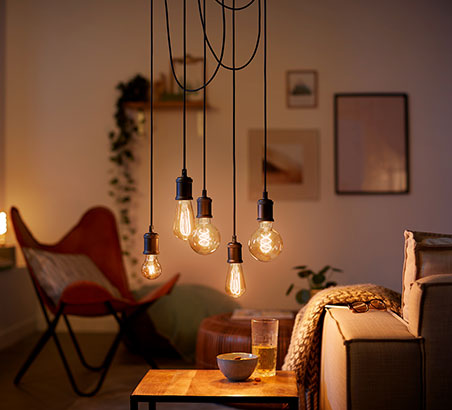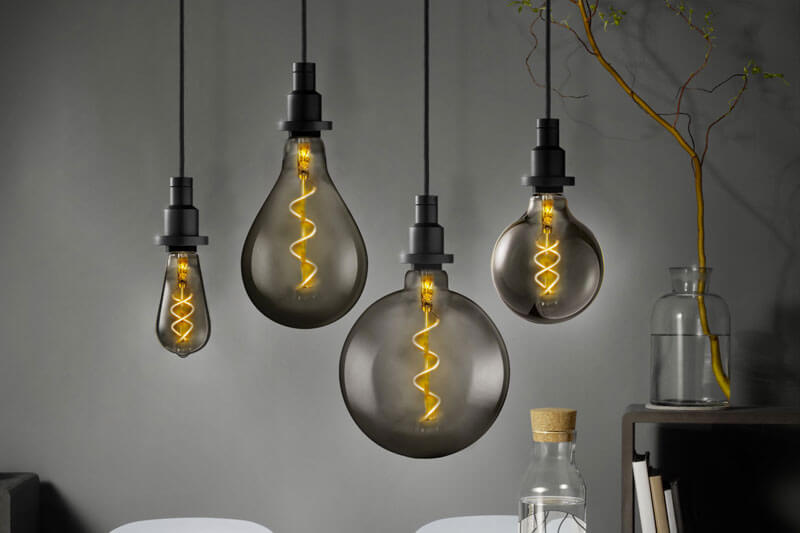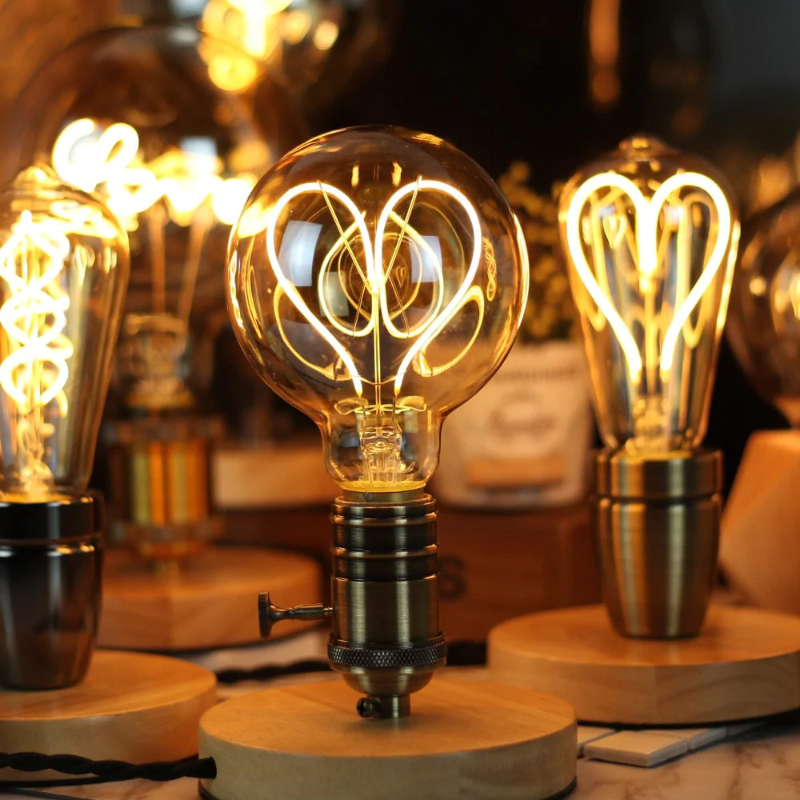As we navigate through modern life, creating a cozy and inviting atmosphere in our homes has become increasingly important. One of the most effective yet often overlooked ways to achieve this is through the strategic use of decorative LED bulbs. In this extensive guide, we will explore everything you need to know about decorative LED bulbs—what they are, the various types available, benefits, installation tips, comparisons, and even my personal experiences. Let’s dive in!
What Are Decorative LED Bulbs?
Decorative LED bulbs are designed not only to provide light but also to enhance the aesthetic appeal of a space. Unlike traditional bulbs, these come in a variety of shapes, sizes, and colors, allowing homeowners to express their unique style while enjoying the energy efficiency that LEDs offer.
Types of Decorative LED Bulbs
1. Edison Bulbs
Edison bulbs emit a warm, nostalgic glow reminiscent of the late 19th century. Their exposed filaments create an industrial look, making them perfect for vintage or rustic-themed spaces.
2. Globe Bulbs
Offering a smooth, rounded appearance, globe bulbs are versatile and can be used in various fixtures. They work well in pendant lights and chandeliers, adding a modern touch.

3. Candle Bulbs
Candle bulbs mimic the shape of traditional candles, providing a graceful touch to any setting. They are often used in wall sconces or candle-style fixtures for a classic ambiance.
4. Smart LED Bulbs
Smart LED bulbs can be controlled via smartphone apps or voice-activated assistants. They offer endless customization options, including color changes and dimming capabilities.
Comparison Table of Decorative LED Bulb Types
| Type | Best Use | Color Temperature | Smart Features |
|---|---|---|---|
| Edison Bulbs | Ambient Lighting | Warm | No |
| Globe Bulbs | General Lighting | Warm to Cool | Optional |
| Candle Bulbs | Accent Lighting | Warm | No |
| Smart LED Bulbs | Customizable Lighting | Wide Range | Yes |
Benefits of Using Decorative LED Bulbs

1. Energy Efficiency
One of the standout features of LED technology is its energy efficiency. Decorative LED bulbs consume significantly less power than traditional incandescent bulbs, translating to lower electricity bills.
2. Longevity
LED bulbs are designed to last much longer than conventional bulbs. On average, an LED bulb can last up to 25,000 hours, meaning fewer replacements over time.

3. Versatility in Design
The numerous styles and finishes available in decorative LED bulbs allow for personalized lighting solutions. From minimalist to ornate, there’s a bulb to fit every décor.
4. Environmentally Friendly
Using LED bulbs contributes to a greener planet. They produce less heat, reducing the need for air conditioning, and they contain no toxic materials, making disposal safe.

Pros and Cons of Decorative LED Bulbs
- Pros:
- Highly energy-efficient
- Long lifespan
- Available in various designs
- Environmentally friendly
- Cons:
- Higher upfront costs
- Can be less forgiving in color temperature adjustments
How to Choose the Right Decorative LED Bulbs
Selecting the right decorative LED bulbs for your space can feel overwhelming. Here’s a step-by-step guide to simplify the process:

1. Determine Your Lighting Needs
Consider whether you need ambient, task, or accent lighting, and choose bulbs accordingly.
2. Choose the Right Color Temperature
Color temperature, measured in Kelvin (K), affects the ambience. Warmer temperatures (around 2700K) are ideal for cozy settings, while cooler temperatures (above 4000K) work better for focused tasks.

3. Assess Your Fixture Compatibility
Check that the bulbs fit well in your existing fixtures. Some decorative bulbs may be larger or have unique bases that require specific sockets.
4. Evaluate Aesthetic Appeal
Don’t forget about the visual component! Choose bulbs that complement your interior design theme.
Installation Tips for Decorative LED Bulbs
Installing decorative LED bulbs is typically straightforward. Here are some tips to ensure it goes smoothly:
1. Turn Off Power
Always turn off the power at the circuit breaker before installing or replacing bulbs to avoid electrical shock.
2. Use Gloves
Handling bulbs with clean, dry hands or gloves prevents oils and dirt from affecting their lifespan.
3. Secure Fixture Properly
Make sure the fixture is secure and free of dust before installing the new bulbs.
Personal Experience: My Journey with Decorative LED Bulbs
Let me take a moment to share my personal experience with decorative LED bulbs. A few months ago, I decided to upgrade my home lighting, especially in the living room. I opted for some vintage-style Edison bulbs, which added a warm, inviting feel that my family and I absolutely love!
The transformation was remarkable. Not only did the space feel cozier, but it also became an instant conversation starter whenever guests visited. A simple switch to energy-efficient bulbs brought my living room back to life and cut my energy bill significantly!
Decorative LED Bulbs for Different Spaces
1. Living Room
For the living room, consider using a combination of ambient lighting with globe bulbs and accent lighting using Edison bulbs. This creates a balance between functionality and style.
2. Bedroom
In the bedroom, soft warm-colored candle bulbs can help create a serene atmosphere perfect for relaxation. Complement these with smart bulbs for customizable lighting options.
3. Kitchen
The kitchen benefits from bright, cool-glow LED bulbs that make food preparation easier. Consider using globe bulbs in pendant lights above counters.
4. Outdoor Spaces
Outdoor decorative LED bulbs, especially string lights, can create a magical ambiance for evening gatherings. Look for waterproof options to ensure durability.
Frequently Asked Questions
1. How long do decorative LED bulbs last?
On average, decorative LED bulbs last about 25,000 to 50,000 hours, greatly outlasting traditional bulbs.
2. Are decorative LED bulbs dimmable?
Many decorative LED bulbs are available as dimmable options, but always check the packaging for compatibility with your dimmer switches.
3. Can I use decorative LED bulbs outdoors?
Yes! Just ensure that the bulbs are rated for outdoor use and are weatherproof to withstand the elements.
4. What’s the difference between warm and cool LED bulbs?
Warm LED bulbs (2700K-3000K) emit a soft, yellow light, while cool LED bulbs (4000K-5000K) produce a brighter, more white light that is ideal for task lighting.
5. Do decorative LED bulbs consume more power than traditional bulbs?
No, decorative LED bulbs consume significantly less power than traditional incandescent bulbs, making them a more economical choice.
Conclusion
Decorative LED bulbs are more than just a source of light; they are an essential element in enhancing the beauty and efficiency of your living space. By choosing the right type and style of decorative LED bulbs, you can create an inviting environment that reflects your personal taste while also being energy-conscious. I hope this comprehensive guide has provided you with valuable insights and practical tips for illuminating your home in style. Happy decorating!